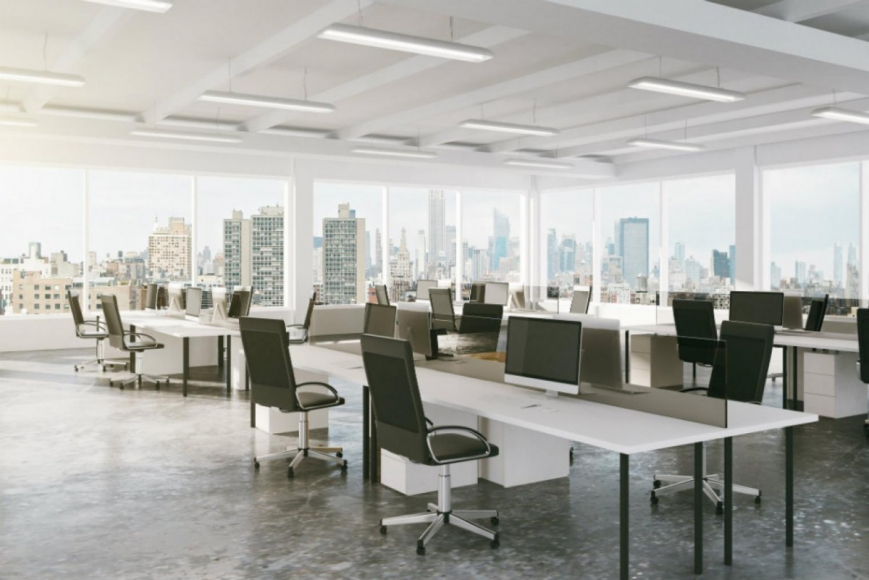We know that EHS managers responsible for low-risk facilities (think offices, retail stores, and other non-manufacturing facilities) are always challenged with regulatory compliance, especially if they are responsible for facilities in multiple countries. We’ve been doing our homework to help you pinpoint the most common regulatory gaps. From 2015 to 2018, Antea Group audited almost 100 low-risk European facilities and came up with over 1,100 findings with an average of 12 findings per facility. The top takeaway? No low-risk workplaces, even managed office and co-working spaces, were without EHS gaps and issues.
Laying the Groundwork
We categorized our findings into eight groups:
- General requirements
- Safety and health
- Emergency preparedness
- Machinery and equipment
- Industrial hygiene and occupational health
- Chemical safety
- Environmental
The top category, representing 35% of all EHS challenges, was general requirements. The next two, each with 20% of the total findings, were safety and health and emergency preparedness.
When companies miss general requirements like forming a health and safety committee or conducting risk assessments, it is much easier to fall flat in other areas of health and safety that rely on that groundwork to succeed. Whether a facility is low-risk, high-risk, or somewhere in-between, facilities need to have strong EHS programs, not just for staying in compliance, but also to keep up with growing employee expectations of what a healthy and safe work environment looks like.
Read on to learn about the most common EHS regulatory challenges that low-risk companies in Europe are facing (originally presented at our spring EHSxTech® conference in Paris):
Missing Safety Committees
One of the biggest EHS gaps we found is that many sites hadn’t formed health and safety committees, yet in many European countries, these committees are mandatory (read our country-specific regulations on health and safety committee regulations in Europe handout to learn more.) Without an official EHS organizational structure in place, the facility is left without the correct processes, plans, and people to manage them. This finding is significant in a few ways—it accounted for 25% of our general requirement audit findings, but also, without a safety committee, many other important health and safety considerations can’t be properly addressed or followed up on, resulting in a lackluster health and safety program.
Lack of Risk Assessments
Our second most frequently identified regulatory gap was that facilities weren’t conducting risk assessments, leaving EHS management in the dark about potential and actual risks. Risk assessments are the regulatory foundation in Europe, and without risk assessments, facilities are not only out of compliance, they can’t track their safety needs over time, improve and refine their safety programs, or address important issues. Remember--just because facilities are labeled low risk doesn’t mean they are no-risk.
Ergonomics Issues
Over 35% of the safety and health audit findings were in the ergonomics category. This is a big concern in low-risk workplaces, where dangers don’t come from working with heavy machinery but from years of sitting incorrectly, prolonged eye strain, or other workplace design issues. Creating workspaces that match job demands and worker capabilities is one of the most important safety goals for a low-risk workplace. EHS management needs to ensure they have a consistent plan that addresses the needs of their employees, as well as working to promote an open culture where employees can provide feedback on their workspaces.
Fire Prevention and Disaster Plan Unpreparedness
The two main emergency preparedness issues we discovered – lack of fire prevention and protection equipment and unclear or nonexistent emergency plans – represent 65% of all emergency preparedness findings. Being prepared for fire events as well as natural disasters, floods, building collapses, and other emergencies is not only a legal obligation but also an ethical obligation to your employees.
As we all know, emergencies can happen anywhere. Investing in disaster preparedness and employee training helps your employees know how to handle the unexpected and allows them to feel greater security in their environment.
Mind the Gaps
Taken together, these findings show that many companies with low-risk operations are not giving enough attention to their offices, retail stores, and other non-manufacturing facilities even though they present their own unique risks to people, the environment, and their reputation. Issues that might seem inconsequential, like a lack of an office safety committee or ergonomic office furniture, can cause significant issues if left unaddressed. Leading organizations will be those that understand the need to identify their compliance gaps in office, retail, and non-manufacturing facilities just as they would in more traditional high-risk environments.
Want more EHS audit insights? Contact us to learn more about EHSxTech or our work with low-risk facilities.
Want more news and insights like this?
Sign up for our monthly e-newsletter, The New Leaf. Our goal is to keep you updated, educated and even a bit entertained as it relates to all things EHS and sustainability.
Get e-NewsletterHave any questions?
Contact us to discuss your environment, health, safety and sustainability needs today.





